29.03.2025
NASA Shares SpaceX Crew-11 Assignments for Space Station Mission
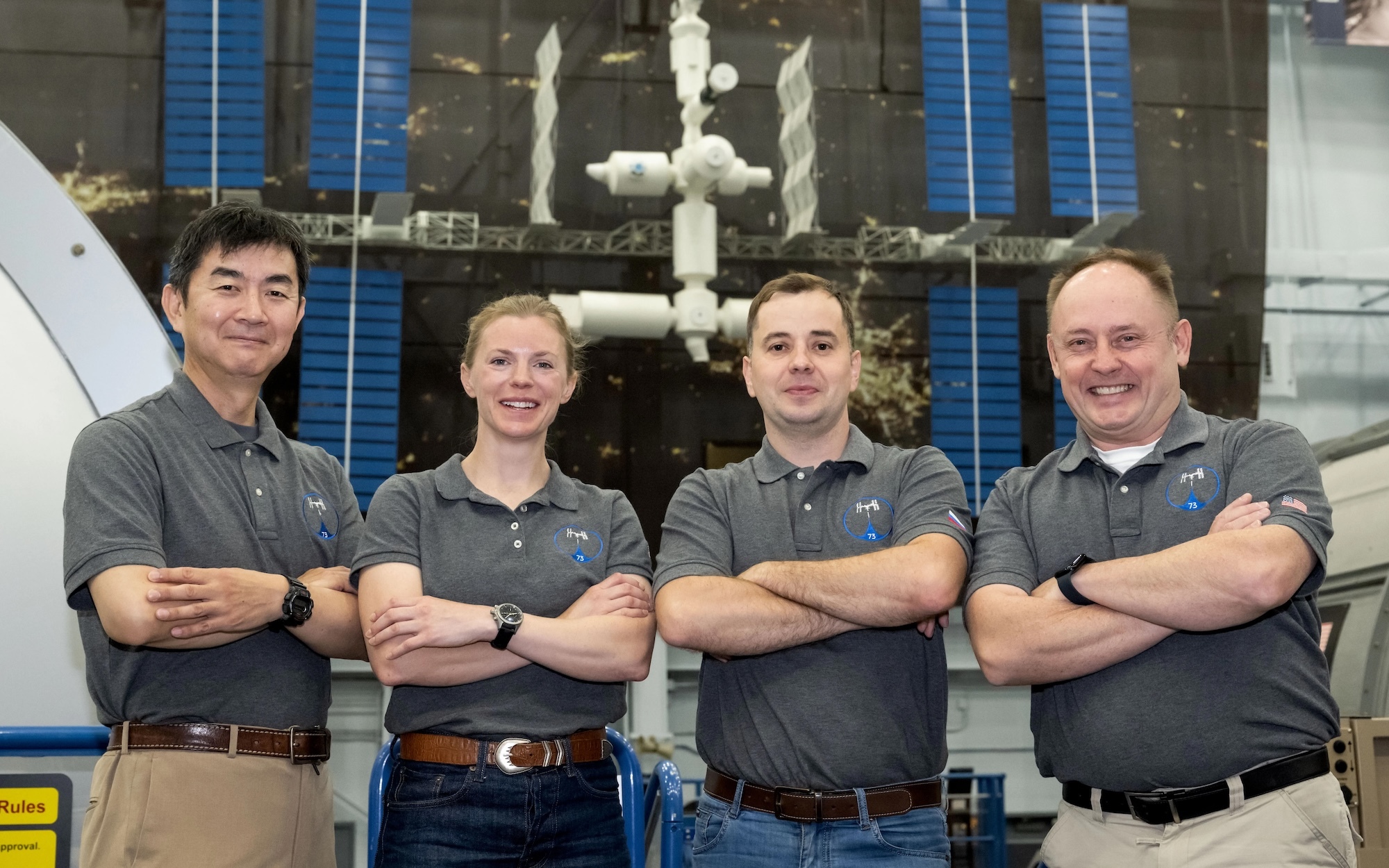
As part of NASA’s SpaceX Crew-11 mission, four crew members from three space agencies will launch in the coming months to the International Space Station for a long-duration science expedition aboard the orbiting laboratory.
NASA astronauts Commander Zena Cardman and Pilot Mike Fincke, JAXA (Japan Aerospace Exploration Agency) astronaut Mission Specialist Kimiya Yui, and Roscosmos cosmonaut Mission Specialist Oleg Platonov will join crew members aboard the space station no earlier than July 2025.
The flight is the 11th crew rotation with SpaceX to the station as part of NASA’s Commercial Crew Program. The crew will conduct scientific investigations and technology demonstrations to help prepare humans for future missions to the Moon, as well as benefit people on Earth.
Cardman previously was assigned to NASA’s SpaceX Crew-9 mission, and Fincke previously was assigned to NASA’s Boeing Starliner-1 mission. NASA decided to reassign the astronauts to Crew-11 in overall support of planned activities aboard the International Space Station. Cardman carries her experience training as a commander on Dragon spacecraft, and Fincke brings long-duration spaceflight experience to this crew complement.
Selected as a NASA astronaut in 2017, Cardman will conduct her first spaceflight. The Williamsburg, Virginia, native holds a bachelor’s degree in Biology and a master’s in Marine Sciences from the University of North Carolina at Chapel Hill. At the time of selection, she had begun pursuing a doctorate in Geosciences. Cardman’s research in geobiology and geochemical cycling focused on subsurface environments, from caves to deep sea sediments. Since completing initial training, Cardman has supported real-time station operations and lunar surface exploration planning.
This will be Fincke’s fourth trip to the space station, having logged 382 days in space and nine spacewalks during Expedition 9 in 2004, Expedition 18 in 2008, and STS-134 in 2011, the final flight of space shuttle Endeavour. Throughout the past decade, Fincke has applied his expertise to NASA’s Commercial Crew Program, advancing the development and testing of the SpaceX Dragon and Boeing Starliner toward operational certification. The Emsworth, Pennsylvania, native is a distinguished graduate of the United States Air Force Test Pilot School and holds bachelors’ degrees from the Massachusetts Institute of Technology, Cambridge, in both Aeronautics and Astronautics, as well as Earth, Atmospheric and Planetary Sciences. He also has a master’s degree in Aeronautics and Astronautics from Stanford University in California. Fincke is a retired U.S. Air Force colonel with more than 2,000 flight hours in more than 30 different aircraft.
With 142 days in space, this will be Yui’s second trip to the space station. After his selection as a JAXA astronaut in 2009, Yui flew as a flight engineer for Expedition 44/45 and became the first Japanese astronaut to capture JAXA’s H-II Transfer Vehicle. In addition to constructing a new experimental environment aboard Kibo, he conducted a total of 21 experiments for JAXA. In November 2016, Yui was assigned as chief of the JAXA Astronaut Group. He graduated from the School of Science and Engineering at the National Defense Academy of Japan in 1992. He later joined the Air Self-Defense Force at the Japan Defense Agency (currently Ministry of Defense). In 2008, Yui joined the Air Staff Office at the Ministry of Defense as a lieutenant colonel.
The Crew-11 mission will be Platonov’s first spaceflight. Before his selection as a cosmonaut in 2018, Platonov earned a degree in Engineering from Krasnodar Air Force Academy in Aircraft Operations and Air Traffic Management. He also earned a bachelor’s degree in State and Municipal Management in 2016 from the Far Eastern Federal University in Vladivostok, Russia. Assigned as a test cosmonaut in 2021, he has experience in piloting aircraft, zero gravity training, scuba diving, and wilderness survival.
For more than two decades, people have lived and worked continuously aboard the International Space Station, advancing scientific knowledge and demonstrating new technologies, making research breakthroughs not possible on Earth. The station is a critical testbed for NASA to understand and overcome the challenges of long-duration spaceflight and to expand commercial opportunities in low Earth orbit. As commercial companies focus on providing human space transportation services and destinations as part of a robust low Earth orbit economy, NASA’s Artemis campaign is underway at the Moon, where the agency is preparing for future human exploration of Mars.
Quelle: NASA
----
Update: 17.04.2025
.
Experience the Launch of NASA’s SpaceX Crew-11 Mission
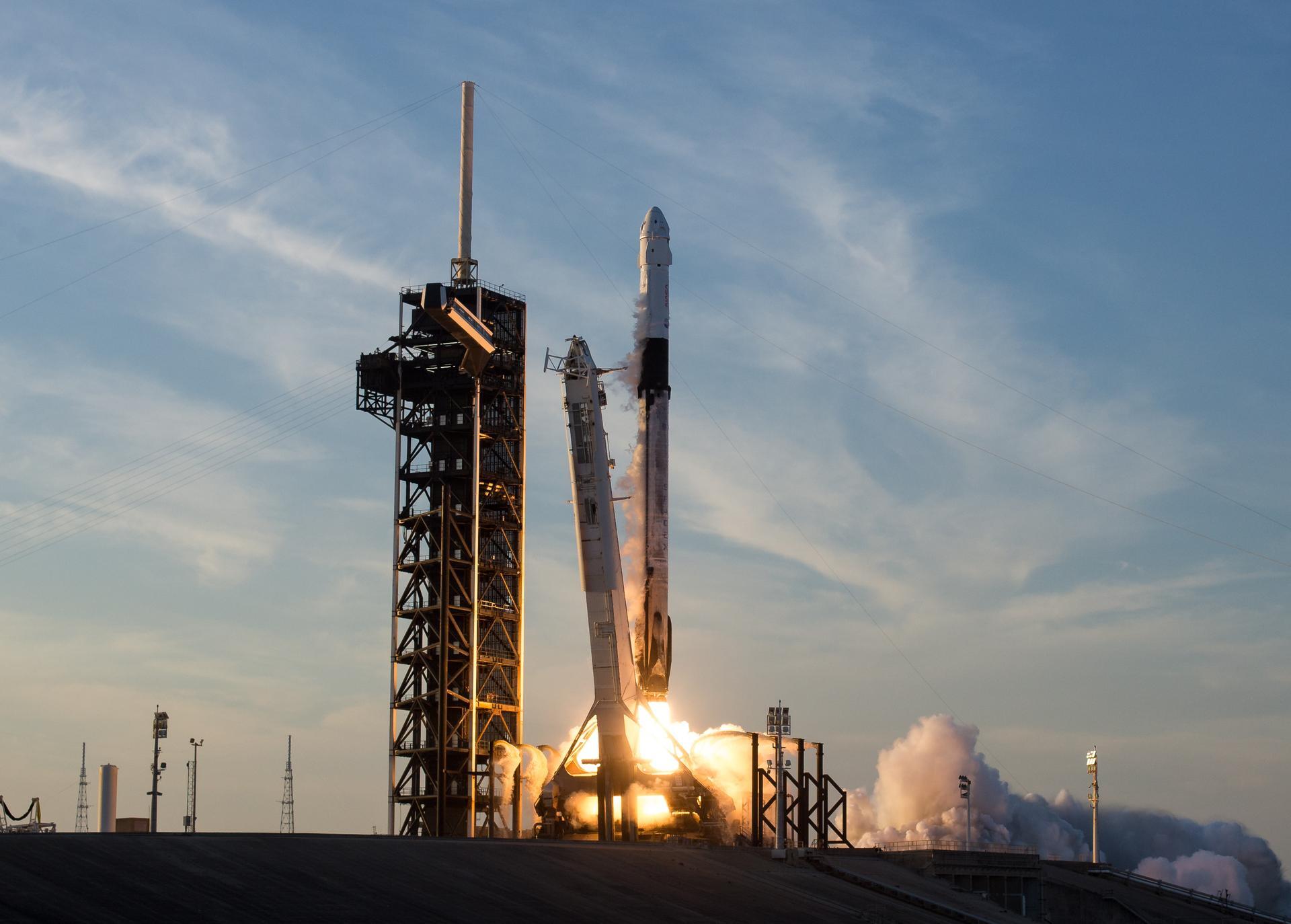
Digital content creators are invited to register to attend the launch of NASA’s SpaceX Crew-11 mission to carry astronauts to the International Space Station for a science expedition as part of NASA’s Commercial Crew Program. This will be the 15th time a SpaceX Dragon spacecraft launched by a Falcon 9 rocket takes crews to the orbital laboratory.
Launch of the Crew-11 mission is targeted for no earlier than July 2025 on a SpaceX Falcon 9 rocket from Florida. The launch will carry NASA astronauts Commander Zena Cardman and Pilot Mike Fincke, and mission specialists JAXA (Japan Aerospace Exploration Agency) astronaut Kimiya Yui and Roscosmos cosmonaut Oleg Platonov.
If your passion is to communicate and engage the world online, then this is the event for you! Seize the opportunity to see and share the #Crew11 mission launch.
A maximum of 50 social media users will be selected to attend this two-day event and will be given exclusive access to NASA’s Kennedy Space Center in Florida.
NASA Social participants will have the opportunity to:
- View a crewed launch of the SpaceX Falcon 9 rocket and Dragon spacecraft
- Tour NASA facilities at the agency’s Kennedy Space Center in Florida
- Meet and interact with Crew-11 subject-matter experts
- Meet fellow space enthusiasts who are active on social media
NASA Social registration for the Crew-11 launch opens on Tuesday, April 15, and the deadline to apply is at 10 a.m. EDT on Monday, April 28. All social applications will be considered on a case-by-case basis.
Do I need to have a social media account to register?
Yes. This event is designed for people who:
- Actively use multiple social networking platforms and tools to disseminate information to a unique audience.
- Regularly produce new content that features multimedia elements.
- Have the potential to reach a large number of people using digital platforms, or reach a unique audience, separate and distinctive from traditional news media and/or NASA audiences.
- Must have an established history of posting content on social media platforms.
- Have previous postings that are highly visible, respected and widely recognized.
Users on all social networks are encouraged to use the hashtag #NASASocial and #Crew11. Updates and information about the event will be shared on X via @NASASocial and @NASAKennedy, and via posts to Facebook and Instagram.
How do I register?
Registration for this event opens on Tuesday, April 15, and the deadline to apply is at 10 a.m. EDT on Monday, April 28. Registration is for one person only (you) and is non-transferable. Each individual wishing to attend must register separately. Each application will be considered on a case-by-case basis.
Can I register if I am not a U.S. citizen?
Yes, this event is open for all to apply, ages 18 years and older.
When will I know if I am selected?
After registrations have been received and processed, an email with confirmation information and additional instructions will be sent to those selected. We expect to send the acceptance notifications by May 30.
What are NASA Social credentials?
All social applications will be considered on a case-by-case basis. Those chosen must prove through the registration process they meet specific engagement criteria.
If you do not make the registration list for this NASA Social, you still can attend the launch offsite and participate in the conversation online. Find out about ways to experience a launch here.
What are the registration requirements?
Registration indicates your intent to travel to NASA’s Kennedy Space Center in Florida and attend the two-day event in person. You are responsible for your own expenses for travel, accommodations, food, and other amenities. You must be able to attend all days of NASA Social activities in order to view the launch
Some events and participants scheduled to appear at the event are subject to change without notice. NASA is not responsible for loss or damage incurred as a result of attending. NASA, moreover, is not responsible for loss or damage incurred if the event is cancelled with limited or no notice. Please plan accordingly.
NASA Kennedy is a government facility. Those who are selected will need to complete an additional registration step to receive clearance to enter the secure areas.
IMPORTANT: To be admitted, you will need to provide two forms of unexpired government-issued identification; one must be a photo ID and match the name provided on the registration. Those without proper identification cannot be admitted.
For a complete list of acceptable forms of ID, please visit: NASA Credentialing Identification Requirements.
All registrants must be at least 18 years old.
What if the launch date changes?
Many different factors can cause a scheduled launch date to change multiple times. If the launch date changes, NASA may adjust the date of the NASA Social accordingly to coincide with the new target launch date. NASA will notify registrants of any changes by email.
If the launch is postponed, attendees may be invited to attend a later launch date but that is not guaranteed.
NASA Social attendees are responsible for any additional costs they incur related to any launch delay. We strongly encourage participants to make travel arrangements that are refundable and/or flexible.
What if I cannot come to the Kennedy Space Center?
If you cannot come to the Kennedy Space Center and attend all days in person, you should not register for the NASA Social. You can follow the conversation online using #NASASocial.
You can also become a virtual guest for NASA launches and milestone events. This free program gives access to curated resources, schedule changes, and mission specific information delivered straight to your inbox. Join us today!
You can watch the launch on NASA+. NASA will provide regular launch and mission updates on X at @NASA, @NASAKennedy, and @Commercial_Crew, as well as on NASA’s Commercial Crew Program blog.
If you cannot make this NASA Social, don’t worry; NASA is planning many other Socials in the near future at various locations!
Quelle: NASA
----
Update: 2.07.2025
.
NASA, SpaceX Invite Media to Watch Crew-11 Launch to Space Station
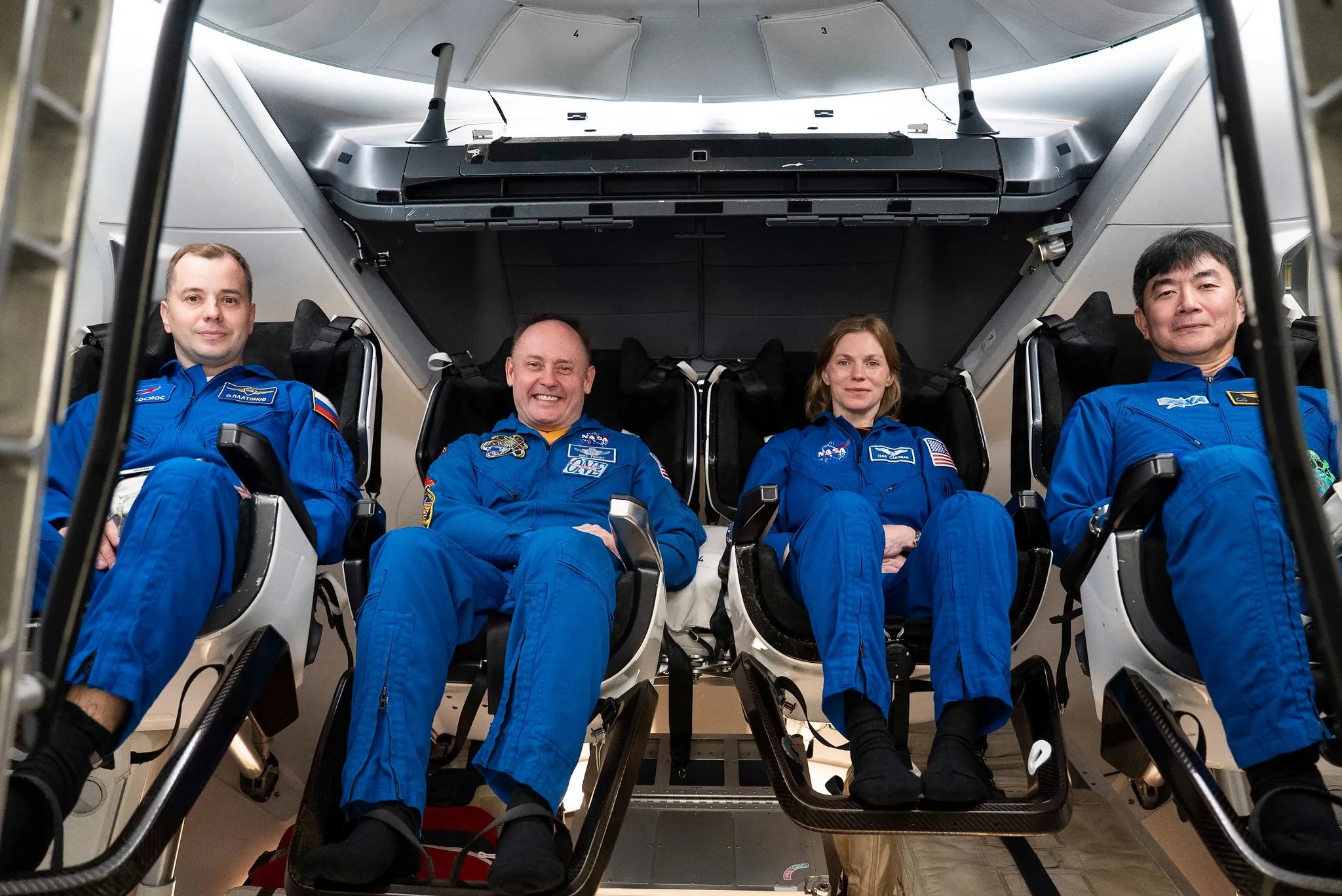
Media accreditation is open for the launch of NASA’s 11th rotational mission of a SpaceX Falcon 9 rocket and Dragon spacecraft carrying astronauts to the International Space Station for a science expedition. NASA’s SpaceX Crew-11 mission is targeted to launch in the late July/early August timeframe from Launch Complex 39A at the agency’s Kennedy Space Center in Florida.
The mission includes NASA astronauts Zena Cardman, serving as commander; Mike Fincke, pilot; JAXA (Japan Aerospace Exploration Agency) astronaut Kimiya Yui, mission specialist; and Roscosmos cosmonaut Oleg Platonov, mission specialist. This is the first spaceflight for Cardman and Platonov, the fourth trip for Fincke, and the second for Yui, to the orbiting laboratory.
Media accreditation deadlines for the Crew-11 launch as part of NASA’s Commercial Crew Program are as follows:
- International media without U.S. citizenship must apply by 11:59 p.m. EDT on Sunday, July 6.
- U.S. media and U.S. citizens representing international media organizations must apply by 11:59 p.m. on Monday, July 14.
Quelle: NASA
----
Update: 13.07.2025
.
NASA’s SpaceX Crew-11 to Support Health Studies for Deep Space Travel
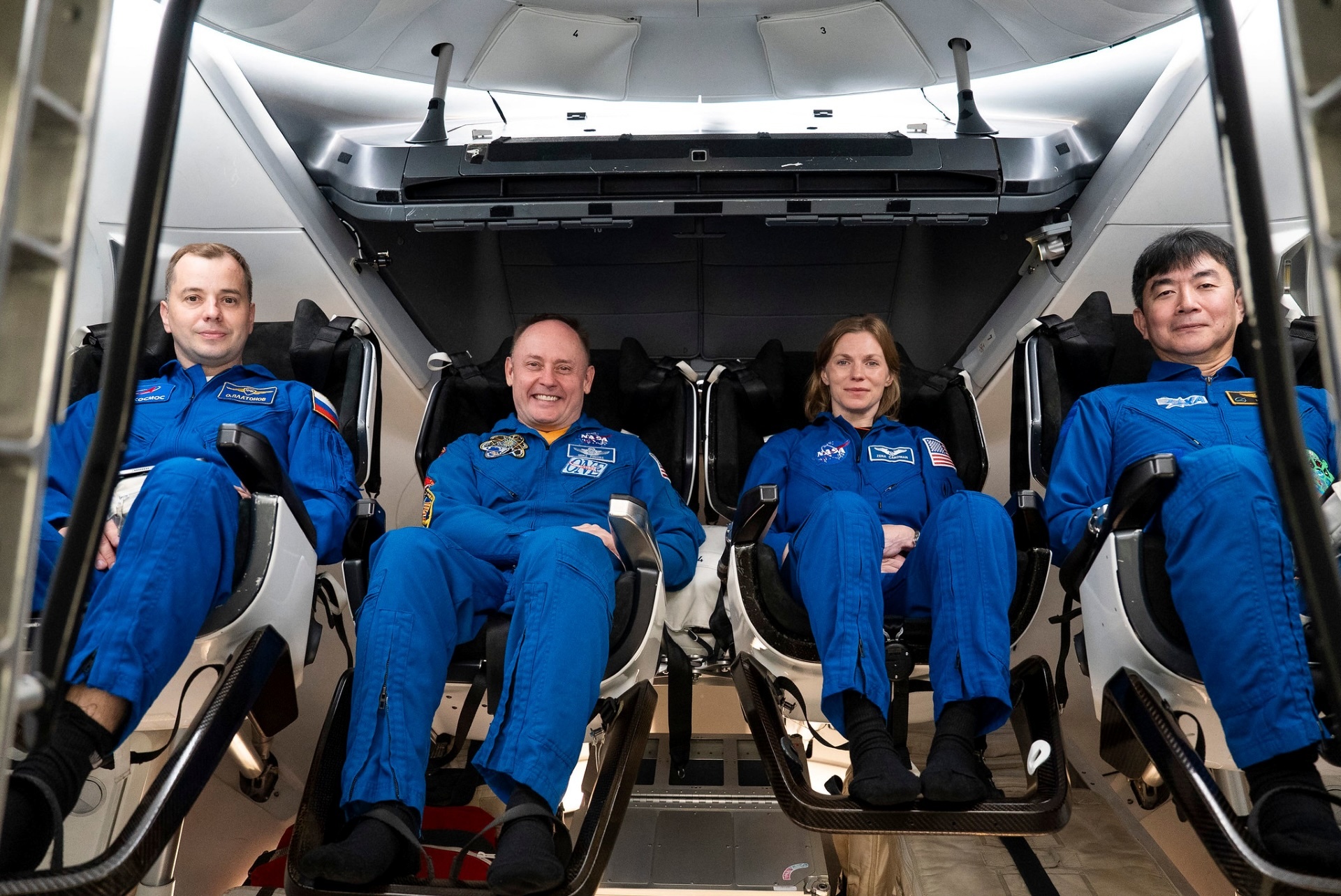
The crew of NASA’s SpaceX Crew-11 mission sit inside a Dragon training spacecraft at SpaceX in Hawthorne, California. Pictured from left: Roscosmos cosmonaut Oleg Platonov, NASA astronauts Mike Fincke and Zena Cardman, and JAXA (Japan Aerospace Exploration Agency) astronaut Kimiya Yui (Credit: SpaceX)
NASA’s SpaceX Crew-11 mission is set to launch a four-person crew to the International Space Station later this summer. Some of the crew have volunteered to participate in a series of experiments to address health challenges astronauts may face on deep space missions during NASA’s Artemis campaign and future human expeditions to Mars.
The research during Crew-11 includes simulated lunar landings, tactics to safeguard vision, and other human physiology studies led by NASA’s Human Research Program.
Select crew members will participate in a series of simulated Moon landings, before, during, and after their flight. Using a handheld controller and multiple screens, the astronauts will fly through simulated scenarios created to resemble the lunar South Pole region that Artemis crews plan to visit. This experiment allows researchers to evaluate how different gravitational forces may disorient astronauts and affect their ability to pilot a spacecraft, like a lunar lander.
“Even though many landing tasks are automated, astronauts must still know how to monitor the controls and know when to take over to ensure a safe landing,” said Scott Wood, a neuroscientist at NASA’s Johnson Space Center in Houston coordinating the scientific investigation. “Our study assesses exactly how changes in gravity affect spatial awareness and piloting skills that are important for navigating these scenarios.”
A ground control group completing the same tasks over a similar timeframe will help scientists better understand gravitational effects on human performance. The experiment’s results could inform the pilot training needed for future Artemis crews.
“Experiencing weightlessness for months and then feeling greater levels of gravity on a planet like Mars, for example, may increase the risk of disorientation,” said Wood. “Our goal is to help astronauts adapt to any gravitational change, whether it’s to the Moon, a new planet, or landing back on Earth.”
Other studies during the mission will explore possible ways to treat or prevent a group of eye and brain changes that can occur during long-duration space travel, called spaceflight associated neuro-ocular syndrome (SANS).
Some researchers suspect the redistribution of bodily fluids in constant weightlessness may increase pressure in the head and contribute to SANS. One study will investigate fluid pressure on the brain while another will examine how the body processes B vitamins and whether supplements can affect how astronauts respond to bodily fluid shifts. Participating crew members will test whether a daily B vitamin supplement can eliminate or ease symptoms of SANS. Specific crew members also will wear thigh cuffs to keep bodily fluids from traveling headward.
Crew members also will complete another set of experiments, called CIPHER (Complement of Integrated Protocols for Human Exploration Research), which measures how multiple systems within the human body change in space. The study includes vision assessments, MRI scans, and other medical exams to provide a complete overview of the whole body’s response to long-duration spaceflight.
Several other studies involving human health and performance are also a part of Crew-11’s science portfolio. Crew members will contribute to a core set of measurements called Spaceflight Standard Measures, which collects physical data and biological samples from astronauts and stores them for other comparative studies. Participants will supply biological samples, such as blood and urine, for a study characterizing how spaceflight alters astronauts’ genetic makeup. In addition, volunteers will test different exercise regimens to help scientists explore what activities remain essential for long-duration journeys.
After landing, participating crew members will complete surveys to track any discomfort, such as scrapes or bruises, acquired from re-entry. The data will help clarify whether mission length increases injury risks and could help NASA design landing systems on future spacecraft as NASA prepares to travel to the Moon, Mars, and beyond.
NASA’s Human Research Program pursues methods and technologies to support safe, productive human space travel. Through science conducted in laboratories, ground-based analogs, and aboard the International Space Station, the program investigates how spaceflight affects human bodies and behaviors. Such research drives NASA’s quest to innovate ways that keep astronauts healthy and mission-ready.
Quelle: NASA
----
Update: 19.07.2025
.
NASA’s SpaceX Crew-11 Enters Quarantine
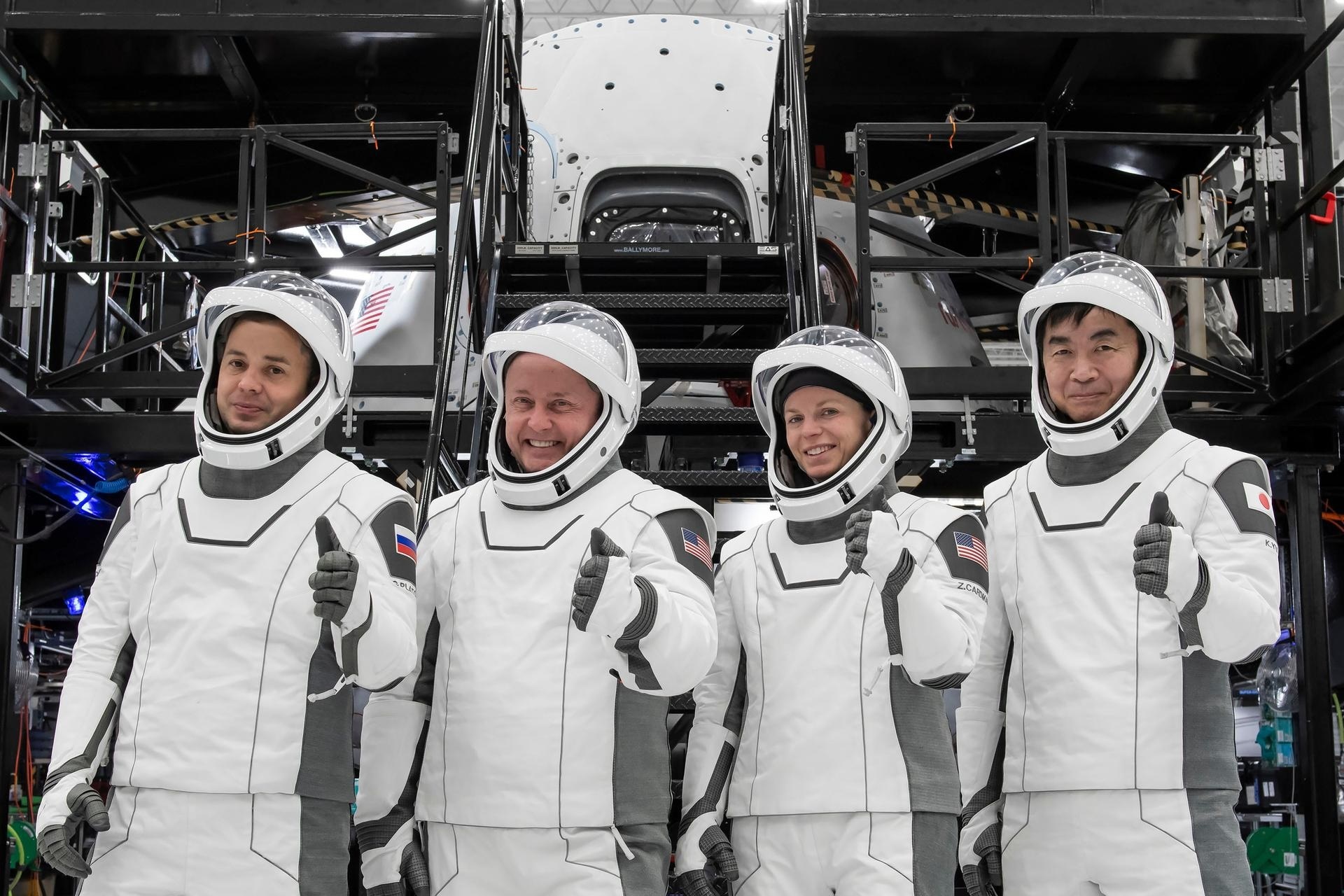
The four crew members slated to fly aboard NASA’s SpaceX Crew-11 mission entered quarantine on Thursday, July 17, at NASA’s Johnson Space Center in Houston. The start of NASA’s routine health stabilization program is one of the last major milestones before they travel from Houston to the agency’s Kennedy Space Center in Florida in preparation for launch to the International Space Station.
NASA astronauts Zena Cardman and Mike Fincke, JAXA (Japan Aerospace Exploration Agency) astronaut Kimiya Yui, and Roscosmos cosmonaut Oleg Platonov will spend the next two weeks before liftoff in crew quarantine. The program started during Apollo to reduce preflight illnesses and prevent subsequent symptoms during flight. During Crew 11’s quarantine, contact with other people is limited and most interactions are handled remotely, while family and some members of the launch and flight teams undergo medical screening and must be cleared before interacting with the crew.
Prior to entering quarantine, the crew spent the last several months training for all phases of flight at NASA and SpaceX facilities in Texas, Florida, and California. At SpaceX’s facility in Hawthorne, California, the crew participated in training simulations focused on all aspects of the mission, including launch, docking, undocking, and departing from the space station, practicing on a high-fidelity simulator of SpaceX’s Dragon spacecraft with flight-realistic hardware, displays, and seats. The four crew members also participated in a water survival demonstration inside the Neutral Buoyancy Lab at NASA Johnson.
At NASA Kennedy, the crew trained at Launch Complex 39A, practicing on the emergency escape system, which employs slidewire baskets to deliver crew and pad teams from the launch tower to waiting armored vehicles on the ground. Earlier this month, the crew also participated in an equipment interface test, putting on their spacesuits, conducting suit leak checks, and familiarizing themselves with the interior of their Dragon spacecraft and ensuring their seats provided a good fit.
NASA and SpaceX are targeting no earlier than 12:09 p.m. EDT, Thursday, July 31, for the launch of the Crew-11 mission.
Quelle: NASA
----
Update: 26.07.2025
.
NASA Sets Coverage for Agency’s SpaceX Crew-11 Launch, Docking
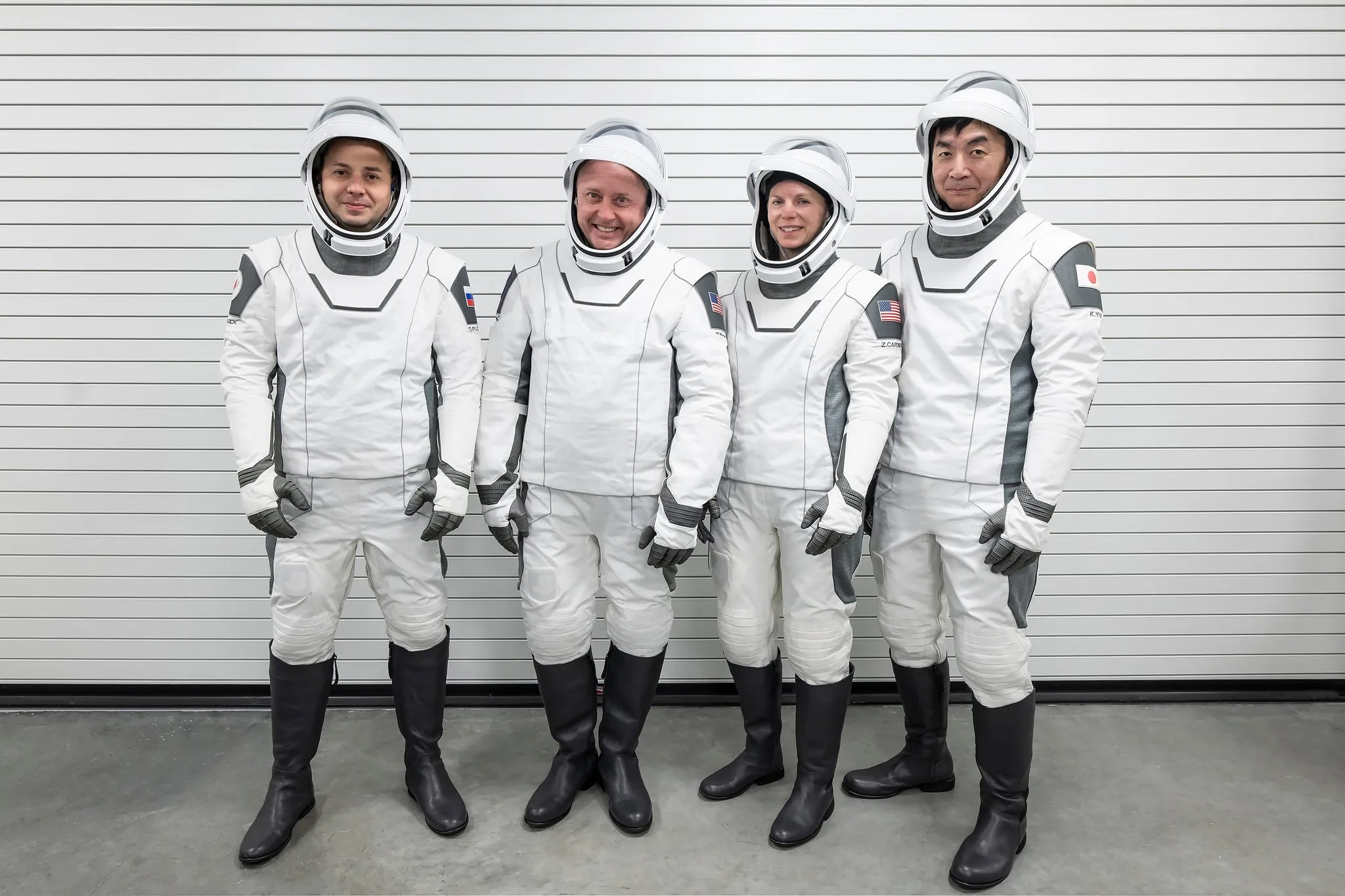
NASA will provide coverage of the upcoming prelaunch and launch activities for the agency’s SpaceX Crew-11 mission to the International Space Station.
Liftoff is targeted for 12:09 p.m. EDT, Thursday, July 31, from Launch Complex 39A at NASA’s Kennedy Space Center in Florida. The targeted docking time is approximately 3 a.m., Saturday, Aug. 2.
Watch agency launch coverage on NASA+, Netflix, Amazon Prime and more. Learn how to watch NASA content through a variety of platforms, including social media.
The SpaceX Dragon spacecraft will carry NASA astronauts Zena Cardman and Mike Fincke, JAXA (Japan Aerospace Exploration Agency) astronaut Kimiya Yui, and Roscosmos cosmonaut Oleg Platonov to the orbiting laboratory for a science mission. This is the 11th crew rotation mission and the 12th human spaceflight mission for NASA to the space station supported by the Dragon spacecraft since 2020 as part of the agency’s Commercial Crew Program.
The deadline for media accreditation for in person coverage of this launch has passed. The agency’s media credentialing policy is available online. For questions about media accreditation, please email: ksc-media-accreditat@mail.nasa.gov.
Media who need access to NASA live video feeds may subscribe to the agency’s media resources distribution list to receive daily updates and links.
NASA’s mission coverage is as follows (all times Eastern and subject to change based on real-time operations):
Saturday, July 26
1 p.m. – Crew-11 arrival media event at NASA Kennedy with the following participants:
- Zena Cardman, spacecraft commander, NASA
- Mike Fincke, pilot, NASA
- Kimiya Yui, mission specialist, JAXA
- Oleg Platonov, mission specialist, Roscosmos
Watch live coverage of the crew arrival media event on the NASA Kennedy’s social media accounts.
This event is open to in person media only previously credentialed for this event. Follow @NASAKennedy on X for the latest arrival updates.
Wednesday, July 30
5:30 p.m. – Prelaunch news conference with the following participants:
- Ken Bowersox, associate administrator, NASA’s Space Operations Mission Directorate
- Steve Stich, manager, NASA’s Commercial Crew Program
- Dana Weigel, manager, NASA’s International Space Station Program
- William Gerstenmaier, vice president, Build and Flight Reliability, SpaceX
- Sergei Krikalev, deputy director general, Manned and Automated Complexes, Roscosmos
- Naoki Nagai, program manager, International Space Station, Human Spaceflight Technology Directorate, JAXA
NASA will provide live coverage of the news conference on the agency’s YouTube channel.
Media may ask questions in person and via phone. For the dial-in number and passcode, media should contact the Kennedy newsroom no later than one hour prior to the beginning of the news conference at: ksc-newsroom@mail.nasa.gov.
Thursday, July 31
8 a.m. – Launch coverage begins on NASA+, Netflix, and Amazon Prime.
12:09 p.m. – Launch
Following the conclusion of launch coverage, NASA will distribute audio-only discussions between Crew-11, the space station, and flight controllers during Dragon’s transit to the orbital complex. NASA+ coverage resumes at the start of rendezvous and docking and continues through hatch opening and the welcoming remarks.
1:30 p.m. – Postlaunch news conference with the following participants:
- Ken Bowersox, associate administrator, NASA’s Space Operations Mission Directorate
- Steve Stich, manager, NASA’s Commercial Crew Program
- Dana Weigel, manager, NASA’s International Space Station Program
- Sergei Krikalev, deputy director general, Manned and Automated Complexes, Roscosmos
- Kazuyoshi Kawasaki, associate director general, Space Exploration Center/Space Exploration Innovation Hub Center, JAXA
- Sarah Walker, director, Dragon Mission Management, SpaceX
NASA will provide live coverage of the postlaunch news conference on the agency’s YouTubechannel.
Media may ask questions in person and via phone. Limited auditorium space will be available for in person participation. For the dial-in number and passcode, please contact the Kennedy newsroom no later than one hour prior to the beginning of the news conference at ksc-newsroom@mail.nasa.gov.
Saturday, Aug. 2
1 a.m. – Arrival coverage begins on NASA+.
3 a.m. – Targeted docking to the space-facing port of the station’s Harmony module.
4:45 a.m. – Hatch opening
5:30 a.m. – Welcome ceremony
All times are estimates and could be adjusted based on real-time operations after launch. Follow the space station blog for the most up-to-date operations information.
Live Video Coverage Prior to Launch
NASA will provide a live video feed of Launch Complex 39A approximately six hours prior to the planned liftoff of the Crew-11 mission. Pending unlikely technical issues, the feed will be uninterrupted until the prelaunch broadcast begins on NASA+, approximately four hours prior to launch. Once the feed is live, find it online at: http://youtube.com/kscnewsroom.
NASA Website Launch Coverage
Launch day coverage of the mission will be available on the NASA website. Coverage will include livestreaming and blog updates beginning no earlier than 8 a.m., July 31, as the countdown milestones occur. On-demand streaming video on NASA+ and photos of the launch will be available shortly after liftoff. For questions about countdown coverage, contact the NASA Kennedy newsroom at 321-867-2468. Follow countdown coverage on the commercial crew or Crew-11 blog.
Quelle: NASA
----
Update: 28.07.2025
.
NASA astronauts arrive at Kennedy Space Center ahead of upcoming SpaceX launch to ISS
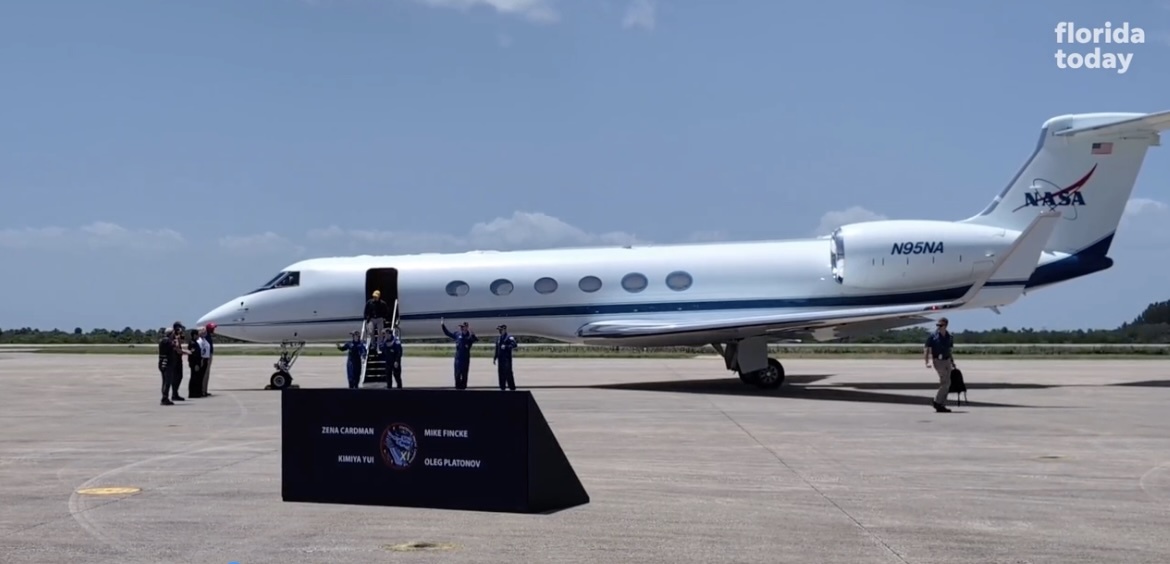
- Crew-11 astronauts arrived at Kennedy Space Center to prepare for their launch to the International Space Station.
- The crew, consisting of NASA, JAXA, and Roscosmos astronauts, will launch no earlier than July 31st.
- The Crew-11 mission will utilize the SpaceX Dragon Endeavor, marking its sixth flight.
On a hot summer afternoon, a crew of astronauts arrived at Kennedy Space Center sporting their blue NASA flight suits -- ready to fly to the International Space Station this coming week.
As the NASA Gulfstream aircraft rolled to a stop at the Space Florida Landing Facility, the four crew members of Crew-11 exited and proceeded toward the waiting media.
NASA astronauts Zena Cardman and Mike Fincke, JAXA (Japan Aerospace Exploration Agency) astronaut Kimiya Yui, and Roscosmos cosmonaut Oleg Platonov will launch to the space station no earlier than 12:09 p.m. July 31. The crew will travel in a SpaceX Crew Dragon spacecraft atop a SpaceX Falcon 9 rocket.
"I've been on different crews before, but this one is exceptional," said Finke, who will be the mission pilot.
"We've been training together for over a year now, and we're ready to fly," added Cardman, who will serve as commander.
It will be Cardman's first spaceflight. Cardman was originally scheduled to fly in 2024 as part of Crew-9, but was reassigned to allow room on the Crew-9 SpaceX Dragon for the return of Starliner Flight Test astronauts Butch Wilmore and Sunita Williams. Wilmore and Williams were assigned to serve as part of Crew-9 after their Starliner spacecraft malfunctioned during its June 2024 flight test -- a mission which, had it been successful, would have certified the spacecraft to ferry NASA astronauts alongside SpaceX's Dragon.
"I'm so honored to be here with the crew, and taking part in this long history of human spaceflight," said Cardman.
The crew will be part of Expedition 73, and will be onboard the outpost for the station's 25th anniversary. The International Space Station saw its first long duration crew in November 2000.
While this is also the first spaceflight for the Russian cosmonaut, the other two crew members bring experience. It will be former shuttle astronaut Finke's fourth spaceflight and the second for Yui.
"It's great to be back," said Finke. "One of the last times I landed at the SLF (shuttle landing facility) was on a space shuttle."
Finke was fortunate enough to see the space station's early days, serving as part of Expedition 9 back in 2004. His last spaceflight was on the final flight of Space Shuttle Endeavor, STS-134, in 2011.
Now Finke will be flying on another Endeavor -- SpaceX Crew Dragon Endeavor.
SpaceX Dragon launching NASA Crew-11
According to SpaceX, the Dragon spacecraft that will launch this crew has already arrived at the launch pad hangar, where it will be mounted to the Falcon 9 rocket.
It will be SpaceX Dragon Endeavor's sixth flight. NASA recently went through a recertification process with SpaceX to allow the company to go beyond the previously certified five flights per capsule. Steve Stich, program manager for NASA's Commercial Crew Program, told media during a July press briefing that NASA is eventually aiming to certify each SpaceX Dragon for up to 15 flights.
Endeavor is the same Dragon spacecraft which launched DEMO-2 in 2020. DEMO-2 was the first orbital launch of astronauts from America since the retirement of the space shuttle, and the flight which certified the Dragon to ferry NASA astronauts.
"I still remember watching that last shuttle launch, STS-135, sitting in a conference room with a very small Dragon team at the time, and it was my first few days here. And I remember looking at the faces around and thinking 'Today we begin. The world is counting on us to write the next chapter of human spaceflight,'" Sarah Walker, director of SpaceX Dragon missions, said during the July press briefing.
Once Crew-11 arrives at the International Space Station, NASA's Crew-10 will prepare to return to Earth. Crew-10 will be the first NASA crew to splashdown in a Dragon on the West Coast. SpaceX moved recovery operations to California earlier this year.
Quelle: Florida Today
----
Update: 29.07.2025
.
NASA’s SpaceX Crew-11 Rocket Arrives at Launch Pad
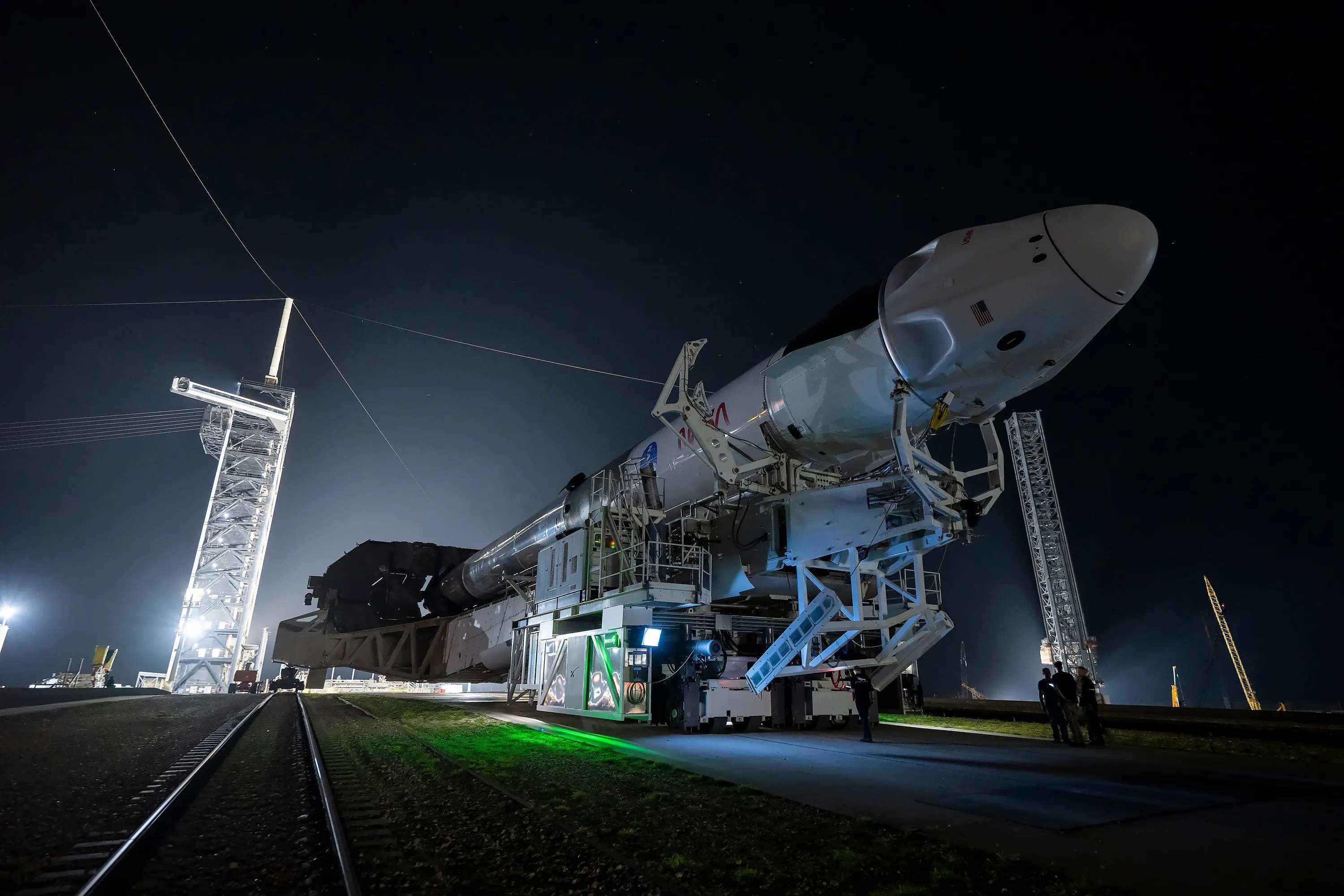
A SpaceX Dragon spacecraft atop the company’s Falcon 9 rocket rolls to the launch pad at Launch Complex 39A at NASA’s Kennedy Space Center in Florida on Sunday, July 27, 2025, for NASA’s SpaceX Crew-11 mission.
The SpaceX Falcon 9 rocket, with the Dragon crew spacecraft atop, for NASA’s SpaceX Crew-11 mission rolled out to the launch pad early Sunday, July 27, at the agency’s Kennedy Space Center in Florida. The rocket was raised to vertical position at Kennedy’s Launch Complex 39A, awaiting lift off no earlier than 12:09 p.m. EDT on Thursday, July 31.
The Crew-11 mission will carry NASA astronauts Zena Cardman and Mike Fincke, JAXA (Japan Aerospace Exploration Agency) astronaut Kimiya Yui, and Roscosmos cosmonaut Oleg Platonov to the International Space Station for a long-duration mission. Crew-11 will conduct new and exciting scientific research aboard the orbiting laboratory to prepare for human exploration beyond low Earth orbit and benefit life on Earth. This is first spaceflight for Cardman and Platonov, the second for Yui, and the fourth for Fincke.
The flight is the 11th crew rotation mission with SpaceX to station, and the 12th human spaceflight under NASA’s Commercial Crew Program. The Crew-11 cadre will fly aboard the SpaceX Dragon crew spacecraft that previously flew NASA’s SpaceX Demo Mission-2, Crew-2, Crew-6, and Crew-8, in addition to Axiom Mission 1, the first private astronaut mission to the microgravity laboratory.
Quelle: NASA
----
Update: 2.08.2025
.
Liftoff! NASA’s SpaceX Crew-11 Launches
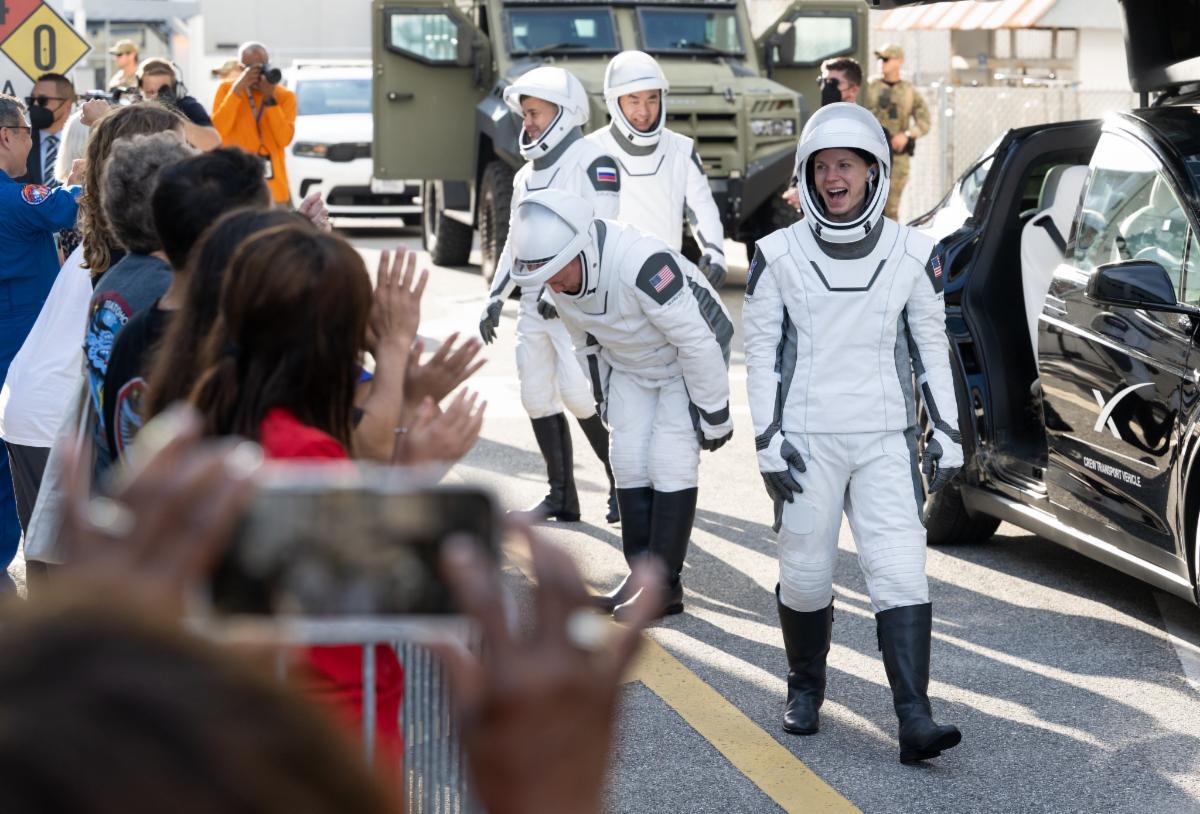
The four crew members of NASA’s SpaceX Crew-11 mission launched at 11:43 a.m. EDT Friday from Launch Complex 39A at the agency’s Kennedy Space Center in Florida for a science expedition aboard the International Space Station. A SpaceX Falcon 9 rocket propelled the Dragon spacecraft into orbit carrying NASA astronauts Zena Cardman and Mike Fincke, JAXA astronaut Kimiya Yui, and Roscosmos cosmonaut Oleg Platonov.
The Dragon spacecraft will dock autonomously to the space station at approximately 3 a.m. EDT on Saturday, Aug. 2. NASA’s live mission coverage will resume at 1 a.m. EDT on NASA+.
During their mission, Crew-11 will conduct scientific research to prepare for human exploration beyond low Earth orbit and benefit humanity on Earth. Participating crew members will simulate lunar landings, test strategies to safeguard vision, and advance other human spaceflight studies led by NASA’s Human Research Program. The crew also will study plant cell division and microgravity’s effects on bacteria-killing viruses, as well as perform experiments to produce a higher volume of human stem cells and generate on-demand nutrients.
Quelle: NASA
